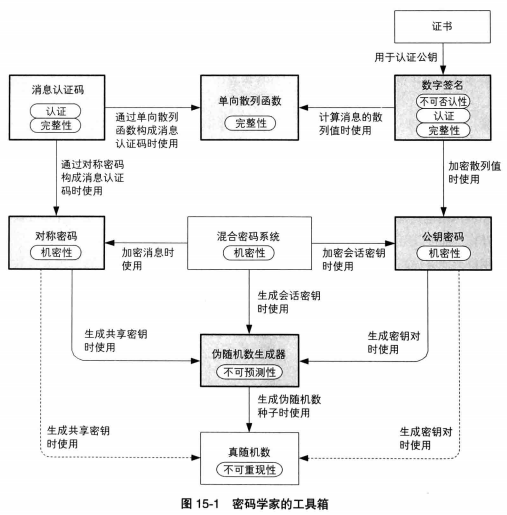C语言基础
gcc从app.c到a.out分为4个步骤:
- Prepressing (预处理)
- Compilation (编译)
- Assembly (汇编)
- Linking (链接)
Prepressing (预编译)
$gcc -E app.c -o app.i
gcc实际是一个工具链,针对不同的语言有不同的套路,如果是c语言则采用cpp来做真正的预编译,所以效果等同于调用,
$cpp hello.c > hello.i
假定app.c
int main(void) {
return 0;
}得到的结果是app.i
# 1 "app.c"
# 1 "<built-in>" 1
# 1 "<built-in>" 3
# 362 "<built-in>" 3
# 1 "<command line>" 1
# 1 "<built-in>" 2
# 1 "app.c" 2
int main(void) {
return 0;
}
加上stdio.h的app.c
#include <stdio.h>
int main(void) {
printf("hello world\n");
return 0;
}这样生成app.i就有544行,
# 1 "app.c"
# 1 "<built-in>" 1
# 1 "<built-in>" 3
# 362 "<built-in>" 3
# 1 "<command line>" 1
# 1 "<built-in>" 2
# 1 "app.c" 2
# 1 "/Applications/Xcode-beta.app/Contents/Developer/Platforms/MacOSX.platform/Developer/SDKs/MacOSX.sdk/usr/include/stdio.h" 1 3 4
# 64 "/Applications/Xcode-beta.app/Contents/Developer/Platforms/MacOSX.platform/Developer/SDKs/MacOSX.sdk/usr/include/stdio.h" 3 4
# 1 "/Applications/Xcode-beta.app/Contents/Developer/Platforms/MacOSX.platform/Developer/SDKs/MacOSX.sdk/usr/include/_stdio.h" 1 3 4
# 68 "/Applications/Xcode-beta.app/Contents/Developer/Platforms/MacOSX.platform/Developer/SDKs/MacOSX.sdk/usr/include/_stdio.h" 3 4
# 1 "/Applications/Xcode-beta.app/Contents/Developer/Platforms/MacOSX.platform/Developer/SDKs/MacOSX.sdk/usr/include/sys/cdefs.h" 1 3 4
# 626 "/Applications/Xcode-beta.app/Contents/Developer/Platforms/MacOSX.platform/Developer/SDKs/MacOSX.sdk/usr/include/sys/cdefs.h" 3 4
...
# 1 "/Applications/Xcode-beta.app/Contents/Developer/Platforms/MacOSX.platform/Developer/SDKs/MacOSX.sdk/usr/include/i386/_types.h" 1 3 4
# 37 "/Applications/Xcode-beta.app/Contents/Developer/Platforms/MacOSX.platform/Developer/SDKs/MacOSX.sdk/usr/include/i386/_types.h" 3 4
typedef signed char __int8_t;
typedef unsigned char __uint8_t;
typedef short __int16_t;
typedef unsigned short __uint16_t;
typedef int __int32_t;
typedef unsigned int __uint32_t;
typedef long long __int64_t;
typedef unsigned long long __uint64_t;
...
extern FILE *__stdinp;
extern FILE *__stdoutp;
extern FILE *__stderrp;
# 142 "/Applications/Xcode-beta.app/Contents/Developer/Platforms/MacOSX.platform/Developer/SDKs/MacOSX.sdk/usr/include/stdio.h" 3 4
void clearerr(FILE *);
int fclose(FILE *);
int feof(FILE *);
int ferror(FILE *);
int fflush(FILE *);
int fgetc(FILE *);
int fgetpos(FILE * restrict, fpos_t *);
char *fgets(char * restrict, int, FILE *);
FILE *fopen(const char * restrict __filename, const char * restrict __mode) __asm("_" "fopen" );
int fprintf(FILE * restrict, const char * restrict, ...) __attribute__((__format__ (__printf__, 2, 3)));
int fputc(int, FILE *);
int fputs(const char * restrict, FILE * restrict) __asm("_" "fputs" );
size_t fread(void * restrict __ptr, size_t __size, size_t __nitems, FILE * restrict __stream);
FILE *freopen(const char * restrict, const char * restrict,
FILE * restrict) __asm("_" "freopen" );
int fscanf(FILE * restrict, const char * restrict, ...) __attribute__((__format__ (__scanf__, 2, 3)));
int fseek(FILE *, long, int);
int fsetpos(FILE *, const fpos_t *);
long ftell(FILE *);
size_t fwrite(const void * restrict __ptr, size_t __size, size_t __nitems, FILE * restrict __stream) __asm("_" "fwrite" );
int getc(FILE *);
int getchar(void);
...
extern int __vsnprintf_chk (char * restrict, size_t, int, size_t,
const char * restrict, va_list);
# 408 "/Applications/Xcode-beta.app/Contents/Developer/Platforms/MacOSX.platform/Developer/SDKs/MacOSX.sdk/usr/include/stdio.h" 2 3 4
# 2 "app.c" 2
int main(void) {
printf("hello world: %d\n");
return 0;
}
大概就是这么个意义,把所有依赖的.h内容全部merge到一个文件。
stdio.h太复杂,我们改为自己的header试试,
app.c
#include "calc.h"
int main(void) {
int result = add(1, 2);
return 0;
}calc.h
#ifndef CALC_H
#define CALC_H
int add(int a, int b);
#endif
生成的app.i很干净
# 1 "app.c"
# 1 "<built-in>" 1
# 1 "<built-in>" 3
# 362 "<built-in>" 3
# 1 "<command line>" 1
# 1 "<built-in>" 2
# 1 "app.c" 2
# 1 "./calc.h" 1
int add(int a, int b);
# 2 "app.c" 2
int main(void) {
int result = add(1, 2);
return 0;
}
这个时候还不需要calc.c
我们来做个实验,include是不是只能.h文件,能不能多次include
hello.txt
app.c
#include "hello.txt"
#include "hello.txt"
#include "hello.txt"
int main(void) {
return 0;
}生成app.i如下
# 1 "app.c"
# 1 "<built-in>" 1
# 1 "<built-in>" 3
# 361 "<built-in>" 3
# 1 "<command line>" 1
# 1 "<built-in>" 2
# 1 "app.c" 2
# 1 "./hello.txt" 1
hello world
# 2 "app.c" 2
# 1 "./hello.txt" 1
hello world
# 3 "app.c" 2
# 1 "./hello.txt" 1
hello world
# 4 "app.c" 2
int main(void) {
int result = add(1, 2);
return 0;
}出乎意料吧,显然重复不太好,
修改hello.txt
#ifndef HELLO
#define HELLO
hello world
#endif
这样就把重复include的问题解决了,加一个变量判断而已,
# 1 "app.c"
# 1 "<built-in>" 1
# 1 "<built-in>" 3
# 361 "<built-in>" 3
# 1 "<command line>" 1
# 1 "<built-in>" 2
# 1 "app.c" 2
# 1 "./hello.txt" 1
hello world
# 2 "app.c" 2
int main(void) {
int result = add(1, 2);
return 0;
}
小结一下,
- 预处理过程主要是针对一个文件,解析其中以‘#’开始的预编译指令,比如#include, #define等
- 递归处理所有include, 复制文件内容
- 处理所有#define和条件指令 #if, #ifdef #ifndef等
- 删除所有注释
- 添加行号和文件名标识,比如# 2 "app.c" 2,辅助后续的错误和警告信息生成
- 保留所有#pragma编译器指令,后续编译阶段需要用到,目前不能删
- 展开所有宏 macro
所以当我们无法判断宏定义的时候,可以直接查看cpp生成的.i文件。
根据以上的
#include <stdio.h>
#include "calc.c"
int main(void) {
printf("1+1=%d", add(1, 1));
return 0;
}其实这样gcc app.c也是ok,可以正常运行的,你了解这个原理就行。
你完全可以理解为,
#include <stdio.h>
int add(int a, int b) {
return a + b;
}
int main(void) {
printf("1+1=%d", add(1, 1));
return 0;
}而引用.h则可以理解为
#include <stdio.h>
int add(int, int);
int main(void) {
printf("1+1=%d", add(1, 1));
return 0;
}
int add(int a, int b) {
return a + b;
}其实你想明白就知道原来多文件在这个时候就是针对一个文件,因为其他文件都被include进来了,当然后面我们来解决申明和实现的'对应'。
Compilation (编译)
编译器就是将高级语言翻译成CPU相关的汇编语言的过程。
$gcc -S app.i -o app.s
等同于
$cc app.i
app.s
.section __TEXT,__text,regular,pure_instructions
.build_version macos, 10, 15 sdk_version 10, 15
.globl _main ## -- Begin function main
.p2align 4, 0x90
_main: ## @main
.cfi_startproc
## %bb.0:
pushq %rbp
.cfi_def_cfa_offset 16G
.cfi_offset %rbp, -16
movq %rsp, %rbp
.cfi_def_cfa_register %rbp
xorl %eax, %eax
movl $0, -4(%rbp)
popq %rbp
retq
.cfi_endproc
## -- End function
.subsections_via_symbols你可以通过gcc -S app.c直接完成propressing和compilation得到.s文件。
Assembly (汇编)
gcc -c app.s -o app.o
等同于
as app.s -o app.o
或者通过-c直接跳步
gcc -c app.c -o app.o
这里的.o文件称为Object File(目标文件),Object File是不可以执行的,
这里先不展开编译和汇编的内容,我们接着往下开Linking部分
Linking (链接)
首先linking用到的是ld,称之为linker,linker作用就是link各种object files, libraries后生成可执行文件(output file),ld可以生成一个最终的linked image, 可执行文件或者库文件。
最简单的app.c
int main(void) {
return 0;
}在mac上linker只需要
gcc -c app.c -o app.o
ld app.o -lSystem
这里的-lSystem中-l表示增加library,而System表示/usr/lib/libSystem.dylib,如果-lssl,则表示/usr/lib/libssl.dylib
ld(1) [osx man page]
多平台情况
我们知道,windows的exe可以从一个机器复制到另外一台机器,但是linux每次都要make configure, make然后install,这是为什么呢?
个人理解:
- windows可执行程序采用PE格式,而linux采用ELF,所以可执行文件肯定不能跨系统运行
- windows只支持x86体系,所以汇编包括链接是一致的,所以可以跨设备运行
- linux不仅支持x86,更是可以支持mips, arm等众多cpu, 所以跨cpu的会得到不同的汇编结果,所以需要重新汇编
- 在当前平台编译别的平台运行的程序称为交叉编译,比如在windows或mac上编译android系统的程序就是一种典型的交叉编译,又比如编译单片机程序
- 同样一个hello world的c文件在不同的系统上有完全不同的编译链路,windows, mac, linux又或者嵌入式系统
Mac上交叉编译Android的hello world
启动android模拟器,
emulator -list-avds
emulator -avd xxx
这里就需要用到ndk作为交叉编译的工具链,
补充一下交叉工具命名一般规则: arch-[vendor]-kernel-system-toolname
- arch,指的是CPU架构, 一般包括如下几种架构: arm, mips, powerpc, x86, x86_64。
- verdor, 一般指的是生产厂商, 如果没有生产厂商可以为空。
- kernel, 指的目标环境使用的 kernel,以android为例,它使用的是 linux内核,所以在这部分会填写为linux。
- system, 指的是那个系统, 如androideabi, android
- toolname: 指的是 gcc, ld, ar等。
android对应的就是arm-linux-andirod-gcc
常用的环境变量:
- PREFIX: 指明交叉编译后输出的目录。
- ARCH: 指明交叉编译后输出的CPU架构。
- CROSS-PREFIX:指明交叉编译前辍 arch-vender-kernel-system
- SYSROOT: 指明交叉编译目标机器的头文件和库文件目录
- TOOLCHAIN: 指明交叉编译工具链的位置。
- PLATFROM: 指明交叉编译时使用的是哪个版本的的头文件和库文件。它是 SYSROOT的一部分。
- ANDROID_NDK: 指明 Android NDK 所在目录。
android ndk官方定义宿主系统如下:
- macOS: darwin-x86_64
- Linux: linux-x86_64
- 32-bit Windows: windows
- 64-bit Windows: windows-x86_64
目标系统tag如下:
- armeabi-v7a: armv7a-linux-androideabi
- arm64-v8a: aarch64-linux-android
- x86: i686-linux-android
- x86-64: x86_64-linux-android
使用 NDK 编译代码主要有三种方法:
- 基于 Make 的 ndk-build。
- CMake。
- 独立工具链,用于与其他编译系统集成,或与基于 configure 的项目搭配使用。
通过下面的片段我们可以看到整个工具链的构成
$ export TOOLCHAIN=$NDK/toolchains/llvm/prebuilt/$HOST_TAG
$ export AR=$TOOLCHAIN/bin/aarch64-linux-android-ar
$ export AS=$TOOLCHAIN/bin/aarch64-linux-android-as
$ export CC=$TOOLCHAIN/bin/aarch64-linux-android21-clang
$ export CXX=$TOOLCHAIN/bin/aarch64-linux-android21-clang++
$ export LD=$TOOLCHAIN/bin/aarch64-linux-android-ld
$ export RANLIB=$TOOLCHAIN/bin/aarch64-linux-android-ranlib
$ export STRIP=$TOOLCHAIN/bin/aarch64-linux-android-strip
google采用了clang取代gcc/g++,其实大同小异。
什么是ABI?
不同的 Android 手机使用不同的 CPU,而不同的 CPU 支持不同的指令集。CPU 与指令集的每种组合都有专属的应用二进制接口,即 ABI。ABI 可以非常精确地定义应用的机器代码在运行时如何与系统交互。您必须为应用要使用的每个 CPU 架构指定 ABI。
armeabi-v7a, arm64-v8a, x86, x86-64就是响应的abi
下载NDK
- 直接从官方NDK Downloads下载
- 通过Android Studio/SDK Manager,下载后在/Users/nonocast/Library/Android/sdk/ndk/20.0.5594570
首先确定目标设备的abi,因为我是在mac上的emulator,所以肯定是x86的,
$adb shell getprop ro.product.cpu.abilist
x86
Mipad
$ adb shell getprop ro.product.cpu.abi
armeabi-v7a
生成对应arch的toolchain,
python make_standalone_toolchain.py --arch arm --install-dir ~/toolchain/arm
python make_standalone_toolchain.py --arch arm64 --install-dir ~/toolchain/arm64
python make_standalone_toolchain.py --arch x86 --install-dir ~/toolchain/x86
// mipad
/Users/nonocast/toolchain/arm/bin/clang app.c -o app
✗ file app
app: ELF 32-bit LSB shared object, ARM, EABI5 version 1 (SYSV), dynamically linked, interpreter /system/bin/linker, not stripped
// emulator
/Users/nonocast/toolchain/x86/bin/clang app.c -o app
➜ src git:(master) ✗ file app
app: ELF 32-bit LSB shared object, Intel 80386, version 1 (SYSV), dynamically linked, interpreter /system/bin/linker, not stripped
Cross Compiling C/C++ for Android - Nick Desaulniers
搞机:AS自带模拟器AVD Root 和 Xposed安装 - 掘金
$ adb push app /data/local/tmp
$ adb shell /data/local/tmp/app
hello world
继续
app.c
int add(int, int);
int main(void) {
add(1, 2);
return 0;
}我们接着来看add这个方法,
- prepressing:
gcc -E app.c -o app.i
# 1 "app.c"
# 1 "<built-in>" 1
# 1 "<built-in>" 3
# 362 "<built-in>" 3
# 1 "<command line>" 1
# 1 "<built-in>" 2
# 1 "app.c" 2
int add(int, int);
int main(void) {
add(1, 2);
return 0;
}
- compilation:
$gcc -S app.i -o app.s
.section __TEXT,__text,regular,pure_instructions
.build_version macos, 10, 15 sdk_version 10, 15
.globl _main ## -- Begin function main
.p2align 4, 0x90
_main: ## @main
.cfi_startproc
## %bb.0:
pushq %rbp
.cfi_def_cfa_offset 16
.cfi_offset %rbp, -16
movq %rsp, %rbp
.cfi_def_cfa_register %rbp
subq $16, %rsp
movl $0, -4(%rbp)
movl $1, %edi
movl $2, %esi
callq _add
xorl %esi, %esi
movl %eax, -8(%rbp) ## 4-byte Spill
movl %esi, %eax
addq $16, %rsp
popq %rbp
retq
.cfi_endproc
## -- End function
.subsections_via_symbols
对比有add方法定义的app.c生成的asm
app.c
int add(int a, int b) {
return a + b;
}
int main(void) {
add(1, 2);
return 0;
}app.s
.section __TEXT,__text,regular,pure_instructions
.build_version macos, 10, 15 sdk_version 10, 15
.globl _add ## -- Begin function add
.p2align 4, 0x90
_add: ## @add
.cfi_startproc
## %bb.0:
pushq %rbp
.cfi_def_cfa_offset 16
.cfi_offset %rbp, -16
movq %rsp, %rbp
.cfi_def_cfa_register %rbp
movl %edi, -4(%rbp)
movl %esi, -8(%rbp)
movl -4(%rbp), %esi
addl -8(%rbp), %esi
movl %esi, %eax
popq %rbp
retq
.cfi_endproc
## -- End function
.globl _main ## -- Begin function main
.p2align 4, 0x90
_main: ## @main
.cfi_startproc
## %bb.0:
pushq %rbp
.cfi_def_cfa_offset 16
.cfi_offset %rbp, -16
movq %rsp, %rbp
.cfi_def_cfa_register %rbp
subq $16, %rsp
movl $0, -4(%rbp)
movl $1, %edi
movl $2, %esi
callq _add
xorl %esi, %esi
movl %eax, -8(%rbp) ## 4-byte Spill
movl %esi, %eax
addq $16, %rsp
popq %rbp
retq
.cfi_endproc
## -- End function
.subsections_via_symbols对比发现缺少_add的定义,没法完成callq _add
最终导致link error
gcc -c app.s -o app.o
➜ src git:(master) ✗ ld app.o -lSystem
Undefined symbols for architecture x86_64:
"_add", referenced from:
_main in app.o
ld: symbol(s) not found for architecture x86_64换句话说,_add是在link阶段完成申明和调用的对接。
缺什么补什么,gcc -S calc.c -o calc.s
calc.s
.section __TEXT,__text,regular,pure_instructions
.build_version macos, 10, 15 sdk_version 10, 15
.globl _add ## -- Begin function add
.p2align 4, 0x90
_add: ## @add
.cfi_startproc
## %bb.0:
pushq %rbp
.cfi_def_cfa_offset 16
.cfi_offset %rbp, -16
movq %rsp, %rbp
.cfi_def_cfa_register %rbp
movl %edi, -4(%rbp)
movl %esi, -8(%rbp)
movl -4(%rbp), %esi
addl -8(%rbp), %esi
movl %esi, %eax
popq %rbp
retq
.cfi_endproc
## -- End function
.subsections_via_symbols然后生成app.o
gcc -c calc.s -o calc.o
最后link的时候合并,
ld app.o calc.o -lSystem -o app
搞定。
回过头来,没有.h一样可以搞定link
所以,.h只不过是提取公因式,没有什么奥秘,无形中形成一个申明定义而已。
app.c
#include <stdio.h>
#include "calc.h"
int main(void) {
printf("1+2: %d\n", add(1, 2));
return 0;
}calc.h
#ifndef CALC_H
#define CALC_H
int add(int a, int b);
#endif
calc.c
#include "calc.h"
int add(int a, int b) {
return a + b;
}gcc app.c calc.c -o app
分解步骤
- 针对每个.c编译汇编生成object file(.o)
- 将object file link生成可执行文件
lib是什么?
lib就是.o的container
通过ar来完成打包
$ ar -crv libcalc.a calc.o
$ file libcalc.a
libcalc.a: current ar archive random library
linux下lib一般的命名规则:libxxx.a
可以通过ar -t查看,
$ar -t libcalc.a
__.SYMDEF SORTED
calc.o
通过nm查看object file中的symbol
$ nm libcalc.a
libcalc.a(calc.o):
0000000000000000 T _add
client如何调用呢?
ld app.o -lSystem -L. -lcalc -o app
回忆一下之前的link
ld app.o calc.o -lSystem -o app
-L告诉ld link directory,然后-l表示lib name
-lx
This option tells the linker to search for libx.dylib or libx.a in the library search path. If string x is of the form y.o, then that file is searched for in the same places, but without prepending `lib' or appending `.a' or `.dylib' to the filename.
-Ldir
Add dir to the list of directories in which to search for libraries. Directories specified with -L are searched in the order they appear on the command line and before the default search path. In Xcode4 and later, there can be a space between the -L and directory.
这样就通过lib完成了模块分离。
静态的好处是容易理解,但问题是lib升级就需要重新编译app,不能自行完成升级,不能被多个app共享。
补充一句gcc link方式,
gcc app.c -L. -lcalc -o app
All about Static Libraries in C - megha mohan - Medium
下面来看动态库,linux下是so, windows下是dll, mac下则是dylib
gcc -shared calc.o -o libcalc.so
gcc app.c -L. -lcalc -o app
当同时存在libcalc.a和libcalc.so时,gcc会优先采用so方式,
同样的语句link app这时候会动态link到libcalc.so, 验证一下,
$ file app
app: Mach-O 64-bit executable x86_64
$ du -h app
16K app
$ otool -L app
app:
libcalc.so (compatibility version 0.0.0, current version 0.0.0)
/usr/lib/libSystem.B.dylib (compatibility version 1.0.0, current version 1279.0.0)
对比一下之前libcalc.a的链接,
$ otool -L app
app:
/usr/lib/libSystem.B.dylib (compatibility version 1.0.0, current version 1279.0.0)
mac的otool对应linux下的ldd.
此时如果移除so则运行会报错,
./app
dyld: Library not loaded: libcalc.so
Referenced from: /Users/nonocast/Developer/projects/learn-c/03-multi-files/src/./app
Reason: image not found
[1] 28999 abort ./app
将libcalc.so ln到/usr/local/lib
ln -s ~/Developer/projects/learn-c/03-multi-files/src/libcalcx.so /usr/local/lib/libcalc.so
./app
1+2=3
那么搜索so的默认路径是什么呢?
默认值: $(HOME)/lib:/usr/local/lib:/lib:/usr/lib
确实如此,放到~/lib下,也能work。
参考:












